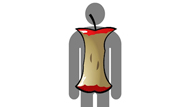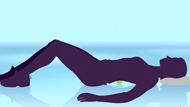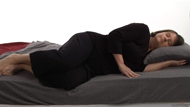Evaluating Low Back Pain
Topic Overview
Your doctor can learn a lot about what is causing low back pain or other symptoms by watching you as you move, and by doing simple tests.
Here are some of the things your doctor may do to evaluate your low back pain:
- Observe how you move. Spasms of the muscles
next to the spine can create pain with any of these tests.
- Walking. You walk while your doctor watches you for things like how you move and carry your body, and whether you limp or favor one leg as you walk. Your doctor may also watch to see how you sit down, lie down, and get up.
- Flexion. You bend forward and try to touch your toes. If bending forward causes pain, it may mean you have a disc problem.
- Extension. You hyperextend your back by bending backward. Pain that increases when bending backward (extending the spine) suggests degenerative changes, spinal stenosis, or spondylolisthesis.
- Rotation and side bending. You rotate your back by keeping your hips still and turning your upper body from side to side to do a rotation test. For side bending you bend to one side, then the other, keeping your hips level and not letting your body rotate. In each of these tests, your doctor will be watching differences between the two sides, such as whether you can bend farther to one side than the other.
- Look at the shape of your back to check for uneven bone development or position, differences in leg lengths, and exaggerated curvature of the spine.
- Tap on the spine. If you feel pain when your spine is tapped, you may have a problem such as a fracture, an infection at or near the site of tenderness, or a tumor.
- Measure how much your chest expands when you breathe in, especially if you are age 20 to 40 (particularly males because they are at highest risk for ankylosing spondylitis). If you are unable to expand your chest normally when you fully inhale, you may have a form of inflammatory arthritis. These forms of arthritis may affect the places where the ribs attach to the back and the breastbone and make it hard to fully expand your chest when you breathe.
Related Information
Credits
ByHealthwise Staff
Primary Medical Reviewer William H. Blahd, Jr., MD, FACEP - Emergency Medicine
Specialist Medical Reviewer Adam Husney, MD - Family Medicine
Current as ofMarch 21, 2017
- Top of Page
Next Section:
Related Information
Previous Section:
Topic Overview- Top of Page
Next Section:
Credits
Previous Section:
Related Information- Top of Page
Current as of: March 21, 2017
Author: Healthwise Staff
Medical Review: William H. Blahd, Jr., MD, FACEP - Emergency Medicine & Adam Husney, MD - Family Medicine




